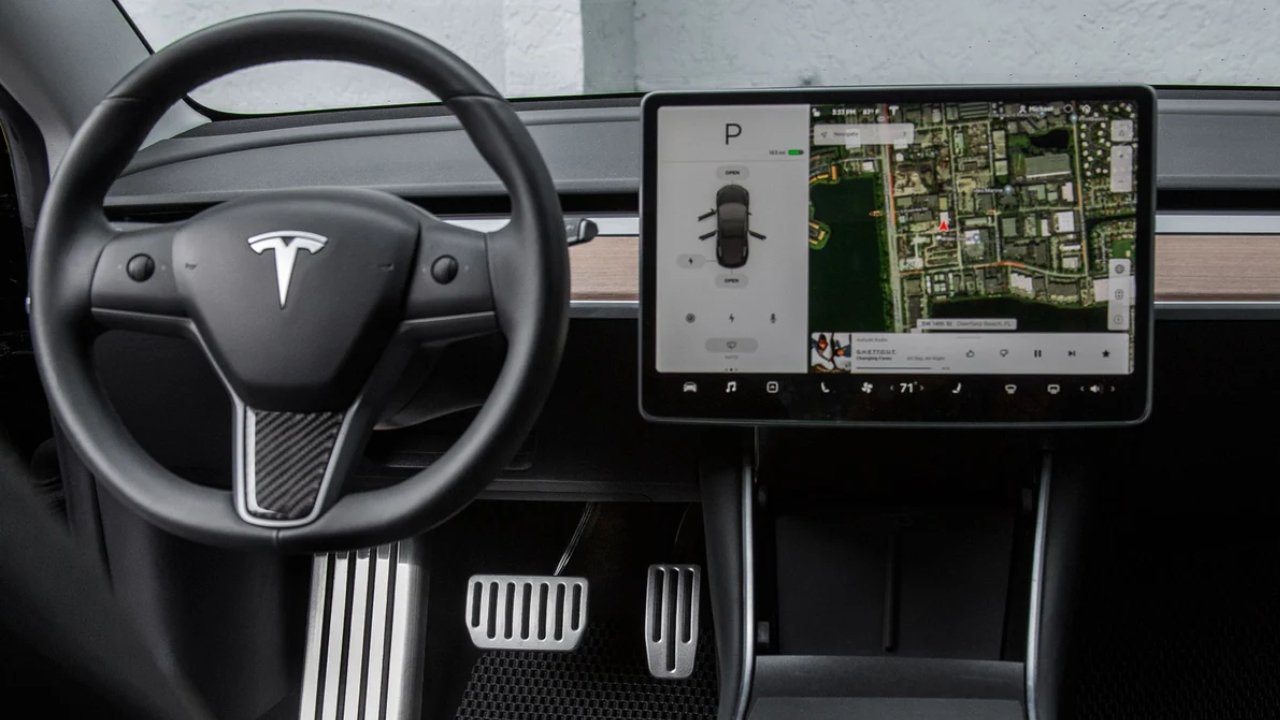The Tesla screen, a significant part of the automaker’s technological revolution, has garnered considerable attention for its glossy, high-tech interface and futuristic capabilities. As vehicles evolve into smarter, more linked machines, Tesla’s revolutionary approach to in-automobile shows has set a new trend. Whether it’s the intuitive controls, the mixing of media and navigation, or the overarching user experience, the Tesla screen plays a pivotal role in how drivers interact with their vehicles. In this blog, we’ll explore the spectacular features of the Tesla screen and how it has transformed the driving experience, for better or worse.
What Makes the Tesla Screen Stand Out?
Tesla’s screen is far more than just a touch display; it is the heart of the vehicle’s interface, presenting everything from media controls to navigation to climate settings. The display’s big, minimalistic design contrasts sharply with traditional car dashboards, and its responsiveness gives a new level of interaction.
The 15-inch touchscreen in Tesla’s Model S, for instance, runs Tesla’s proprietary software, giving users access to a wide range of functions including climate control, media streaming, navigation, and vehicle diagnostics. The system also receives over-the-air updates, meaning that new features and improvements can be added without the need for a visit to a dealership.
The Pros of the Tesla Screen: A Leap into the Future
One of the most notable advantages of the Tesla screen is its ability to streamline the driving experience. The minimalistic interface reduces clutter and combines multiple controls into one central hub. Drivers can adjust the temperature, change music, and access maps all from a single screen, eliminating the need for physical buttons and multiple dials.
Over-the-Air Updates
Tesla’s ability to push software updates to vehicles remotely is another game-changing feature of the Tesla screen. These updates can improve performance, add new features, and even fix bugs. This is a significant advantage over traditional vehicles that require a visit to the dealership for updates or repairs.
Enhanced Navigation and Media Integration
The Tesla screen provides seamless integration of navigation and media, offering real-time traffic updates, weather reports, and media streaming from platforms like Spotify and YouTube. This ease of use creates a more connected and enjoyable driving experience.
The Cons of the Tesla Screen: Is It Really All Sunshine and Rainbows?
While the Tesla screen‘s large interface is intuitive, it can also pose a distraction risk. Some critics argue that the centralization of controls into one screen can take the driver’s focus away from the road. With so many functions available on the screen, it’s easy for drivers to get caught up in adjusting settings while driving. This becomes especially problematic when driving in unfamiliar areas or during long commutes.
Reliance on Technology
The heavy reliance on the Tesla screen also means that, if it malfunctions, it can lead to a less-than-optimal driving experience. Certain Tesla models are known to experience issues with screen responsiveness, and in some cases, a complete failure of the screen can disable key vehicle functions like air conditioning, navigation, or even driving modes.
A Learning Curve for New Users
New Tesla drivers may also struggle with the screen’s interface at first. While it is user-friendly once learned, the complexity of the system can be intimidating for individuals accustomed to traditional car designs with physical controls. The screen is a powerful tool, but it requires a degree of tech-savviness that may alienate some drivers.
Expert Insight: The Future of In-Car Technology
To gain a deeper understanding of the Tesla screen’s impact, we spoke with a leading automotive technology expert, Dr. Robert Langley, who specializes in in-vehicle user experience design. He commented:
“The Tesla screen is a glimpse into the future of automobiles. As we move toward more autonomous and connected vehicles, centralized interfaces like Tesla’s will become the norm. However, it’s crucial that manufacturers address the challenges of distraction and user adaptability to ensure that these systems enhance, rather than detract from, the driving experience.”
Tesla Screen’s Impact on the Industry
Tesla’s innovative approach to in-car screens has forced other automakers to step up their game. While many traditional car manufacturers have been slow to adopt touchscreen technology, Tesla has led the way in integrating complex functions into a single interface. Now, we’re seeing a shift in the industry as other car manufacturers are incorporating large, tablet-like displays into their designs, though none have yet matched the overall functionality and design of Tesla’s interface.
A New Era for In-Car Entertainment
Beyond navigation and climate control, the Tesla screen has also changed how we interact with entertainment in our vehicles. With the ability to stream Netflix, YouTube, and other media platforms, Tesla has redefined the in-car entertainment experience. Drivers and passengers can now watch movies or listen to podcasts seamlessly, turning the car into a mobile entertainment hub.
Conclusion: The Tesla Screen – A Step Forward in Automotive Innovation
The Tesla screen is undoubtedly one of the most exciting innovations in the automotive world. With its sleek design, ease of use, and integration of essential functions, it has set a new standard for in-car technology. While there are a few drawbacks, such as the potential for distraction and the reliance on technology, Tesla continues to refine the system with each update, making it more intuitive and user-friendly.
In the future, we can expect the Tesla screen—and similar interfaces from other automakers—to evolve into even more sophisticated systems. As autonomous driving becomes more prevalent and technology advances, the Tesla screen might one day serve as the central hub for a fully autonomous driving experience. Until then, it remains one of the most revolutionary features of Tesla’s vehicles, paving the way for a more connected and intuitive automotive future.



